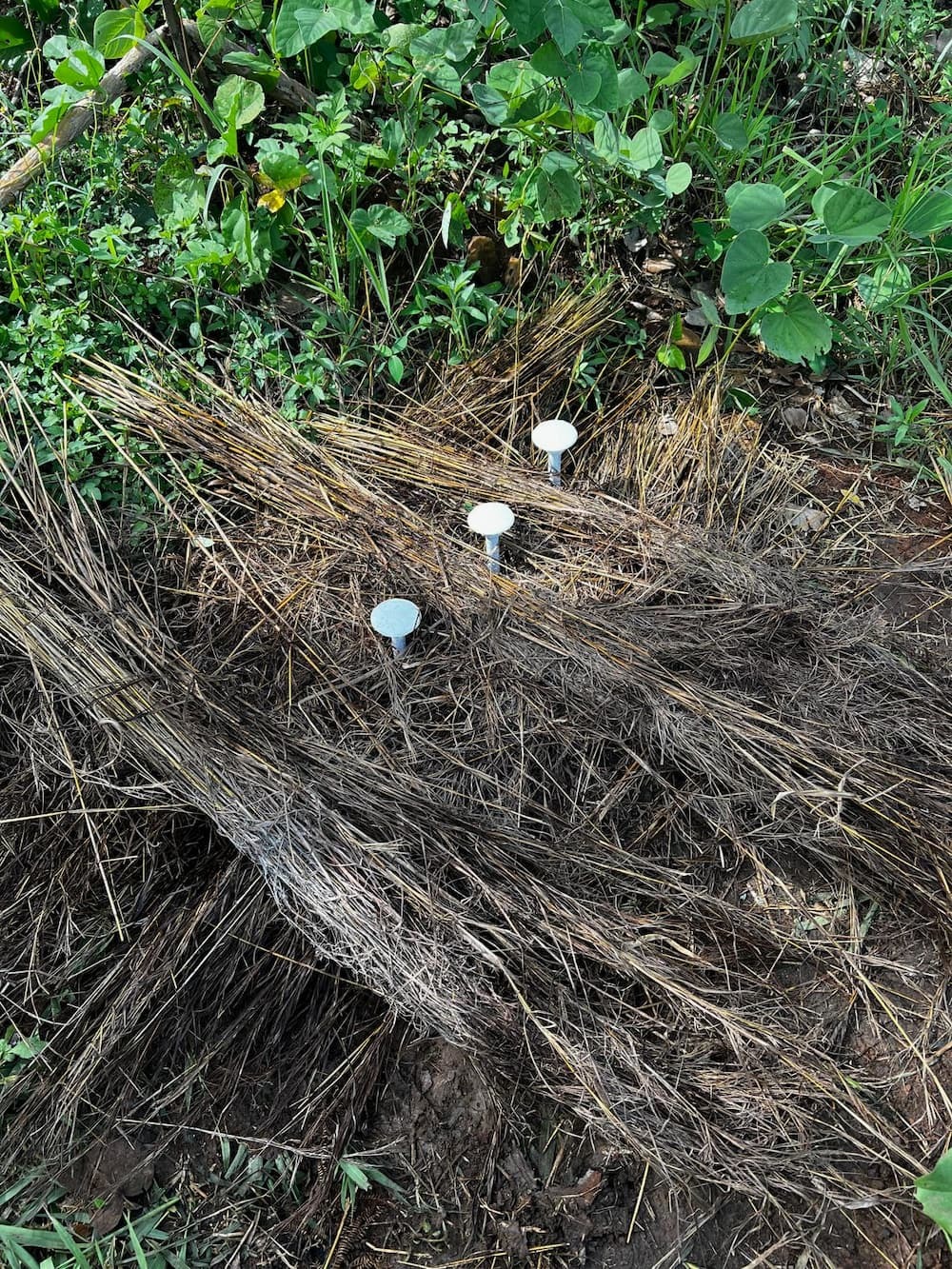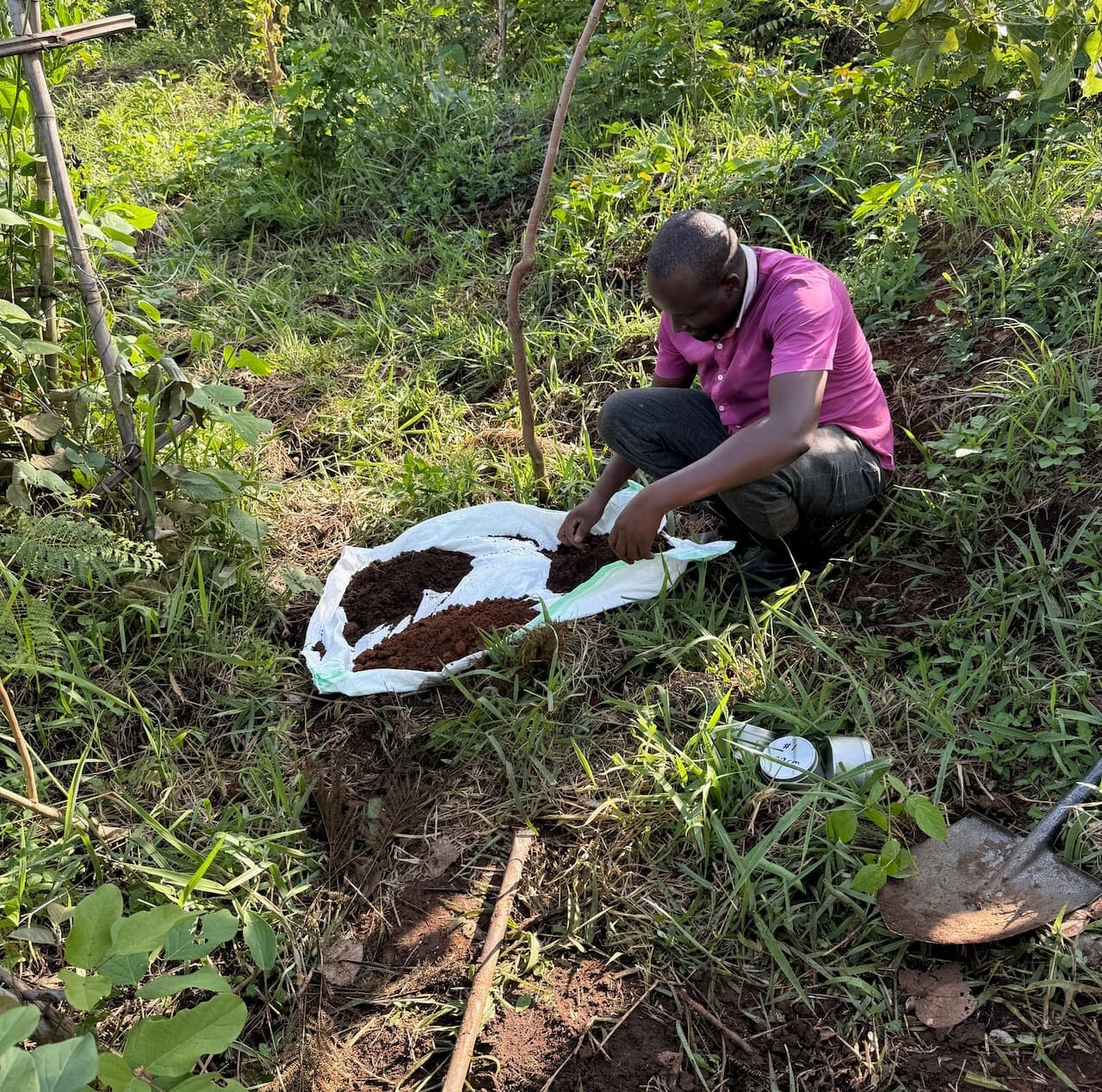Monitoring and measuring the impact of Resilience Design (RD) requires an observational approach that differs from mapping fields farmed using conventional agriculture based on one or a few crops. The technology and science needs to be able to capture complex ecosystem functions in highly biodiverse environments.
RD Research Approach
At Lok Neno–African Women Rising’s RD Demonstration, Training, and Research Site in Northern Uganda–we are developing approaches for understanding the impacts of RD on key impact areas: biodiversity, soil health, and hydrology. Our research approach utilizes technologies that allow us to develop quantitative metrics at a range of spatial and temporal scales. From laboratory experiments and onsite data collection, to aerial and remote sensing surveys, we aim to create a comprehensive, data- and science-driven view on how RD can be implemented at scale.

In May 2025, we spent a week at Lok Neno operationalizing a research grade weather station and calibrating and installing various types of soil moisture and soil water potential probes. These tools will provide deep insights into how the water harvesting and permaculture techniques used influence the water infiltration and water holding capacity of soils across the site. Monitoring borehole water levels and additional soil moisture sampling campaigns will add to our understanding of the overall changes in the site’s hydrology.
With a particular focus on how the soil microbiome benefits resilient and regenerative agroecosystems, we have also started sampling bacteria/fungal ratios–a crucial factor in determining soil health and the soil ecology’s ability to provide nutrients to plants. Building on these first results, we aim to expand our research into the role of the soil microbiome in regenerative farming and ecosystem health by partnering with local, national, and international research labs.
To support the research program locally, AWR recently brought a research technician on board, David Kilama, MSc. in Biosystems Engineering from Gulu University.

Digital Twin for Analysis and Research
All data gathered on site–on the ground and from space–will be instrumental in developing a digital twin of the 15-acre RD demonstration site: for in-depth analysis and research to help us better understand the impacts of RD. Based on the scientific results created, we are working directly with global humanitarian organizations to develop and integrate ecological indicators into their programming to enable robust scaling of the approach.
With our research program that invites collaboration from local to international levels, we aim to advance our collective scientific understanding of the role of agroecosystems in environmental restoration, health, and food security and find ways to expand the reach of RD into the most vulnerable communities across the globe.
We are excited to announce that our first analysis of remotely-sensed data has already shown quantitative signs of how an RD production system translates to direct ecological benefits. A peer-reviewed publication is on its way!
For inquiries related to the RD research program, please contact Dr. Carmen Blackwood or Warren Brush.

